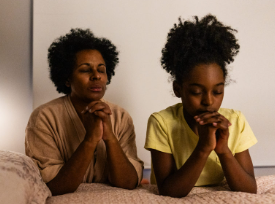Parties are often some of the most exciting events in a child’s life. Whether it is a birthday celebration, a holiday gathering, or a school event, children look forward to the games, the laughter, and of course the food. These occasions are full of special treats that make the day feel memorable. While parties are meant to be enjoyed, they also provide wonderful opportunities to teach children about making balanced choices. Helping kids learn how to have fun while also being mindful of their health encourages habits that will support them throughout their lives.
Children do not need to miss out on cake, ice cream, or their favorite party snacks to stay healthy. What they need is gentle guidance to understand that balance allows them to enjoy those treats without overdoing it. Adults can teach that parties are about more than food; they are about celebrating, connecting with friends, and enjoying experiences. This perspective helps children see that they do not have to focus only on what they are eating, but also on all the other fun parts of the celebration.
One of the best ways to prepare children for balanced choices at parties is to start the conversation at home. Parents and caregivers can explain in simple terms that parties usually have special foods that are different from everyday meals. Framing it positively helps kids feel excited rather than restricted. For example, saying “At parties we enjoy some extra treats, but we also remember to make choices that help our bodies feel good” keeps the tone friendly and encouraging. Children respond well to guidance that is clear but not controlling.
Modeling balanced choices is one of the strongest teaching tools. When kids see adults enjoying a slice of cake but also choosing some fruit or drinking water, they learn by example. Parents who participate in games, laugh with friends, and focus on the celebration rather than just the food show children what it means to enjoy the full experience of a party. This demonstration helps kids understand that balance is not about denying themselves but about keeping all parts of the day in harmony.
Parties often offer a wide spread of foods, and this variety is a good teaching opportunity. Encouraging children to fill their plate with a mix of items allows them to practice making balanced selections. If a party has fruit alongside cookies, parents can guide kids to try a little of both. The goal is not to insist on one “good” choice and one “bad” choice but to show that enjoying both is possible. By encouraging moderation, adults help children understand that balance is about mixing different options in a way that leaves them feeling satisfied and happy.
Hydration is another area where children can practice balance. At many parties, sugary drinks are common, and while they can be part of the celebration, water should also have its place. Parents can gently remind kids that drinking water helps them stay energized to keep playing and enjoying the day. Making water appealing by adding a slice of lemon or orange can make it feel just as special. When kids see that drinking water supports their fun, they begin to appreciate the role it plays in balanced choices.
Movement is a natural part of most children’s parties, whether through games, dancing, or running around with friends. Reminding children that playing is just as important as eating is another way to highlight balance. A child who spends time both enjoying snacks and joining in activities learns that the best parties are about variety. Parents can encourage kids to participate in games or help organize activities to make sure movement is a central part of the day. This balance between eating and playing creates joyful memories while also supporting healthy habits.
It is also important to teach kids how to listen to their bodies. Parties can be overwhelming with so many exciting choices, and children might be tempted to eat too quickly or have more than they need. Parents can encourage kids to pause and notice how they feel. Asking gentle questions like “Are you still hungry or are you full now?” helps children develop self-awareness. This skill of paying attention to hunger and fullness cues is a valuable lesson that goes far beyond parties and applies to everyday life as well.
Another aspect of balance at parties is emotional well-being. Sometimes children may feel pressured to eat or may compare themselves to what their friends are having. Adults can reassure kids that everyone’s choices are different and that it is okay to do what feels right for them. This helps children build confidence in making their own decisions. Teaching respect for others’ choices also encourages kindness and reduces any feelings of guilt or worry.
Parties can also be a chance to involve children in planning. If it is a birthday celebration at home, kids can help choose both the special treats and some healthier options. Allowing them to take part in selecting the menu makes them feel proud and invested. They might choose to include fruit skewers alongside cupcakes or suggest a fun game that keeps everyone moving. When kids see that balanced choices are part of creating a great party, they are more likely to value those choices themselves.
Positive reinforcement is key. After a party, parents can talk with children about what they enjoyed most. Asking questions like “What was your favorite game?” or “Which foods did you like best?” helps them reflect on the experience. When adults highlight the balance they noticed, such as saying “I saw you tried both the fruit and the cake, that was a smart choice,” children feel proud and encouraged. This type of feedback reinforces the idea that balance is achievable and rewarding.
Over time, these lessons build strong habits. Children who learn to make balanced choices at parties carry those skills into other social settings, such as school events or family gatherings. They understand that it is not about avoiding treats but about enjoying them in moderation and remembering that wellness comes from variety. This balanced perspective gives them freedom while also guiding them toward healthier lifestyles.
Teaching kids about balance at parties is not about rules or restrictions. It is about showing them how to celebrate with joy while still caring for their bodies and minds. By focusing on the whole experience of the party—laughter, games, friends, and food—adults can help children see that balance is a natural and positive part of life. When wellness is woven into celebrations in a gentle and fun way, children discover that they can enjoy every moment while also making choices that help them feel good.
In the end, parties are about creating memories and sharing happiness. By guiding children to make balanced choices, adults are giving them tools that will last a lifetime. These lessons remind kids that they can enjoy special moments without going to extremes, and that balance brings even more joy to the celebration. With patience, encouragement, and plenty of positive examples, parents and caregivers can show children that balance is not just possible at parties—it is what makes them even more special.






